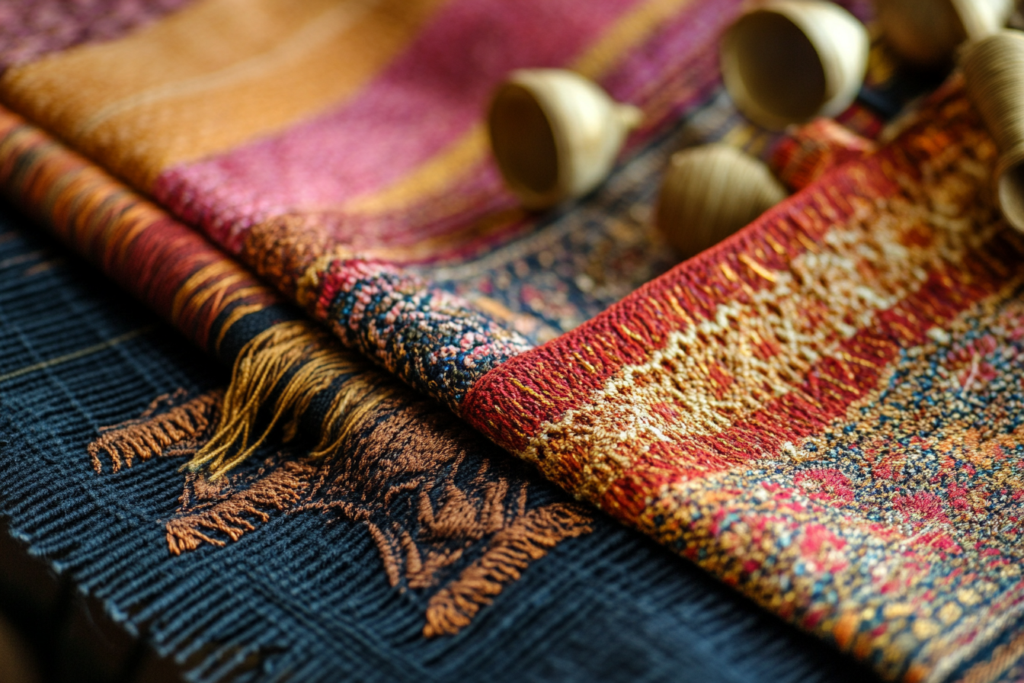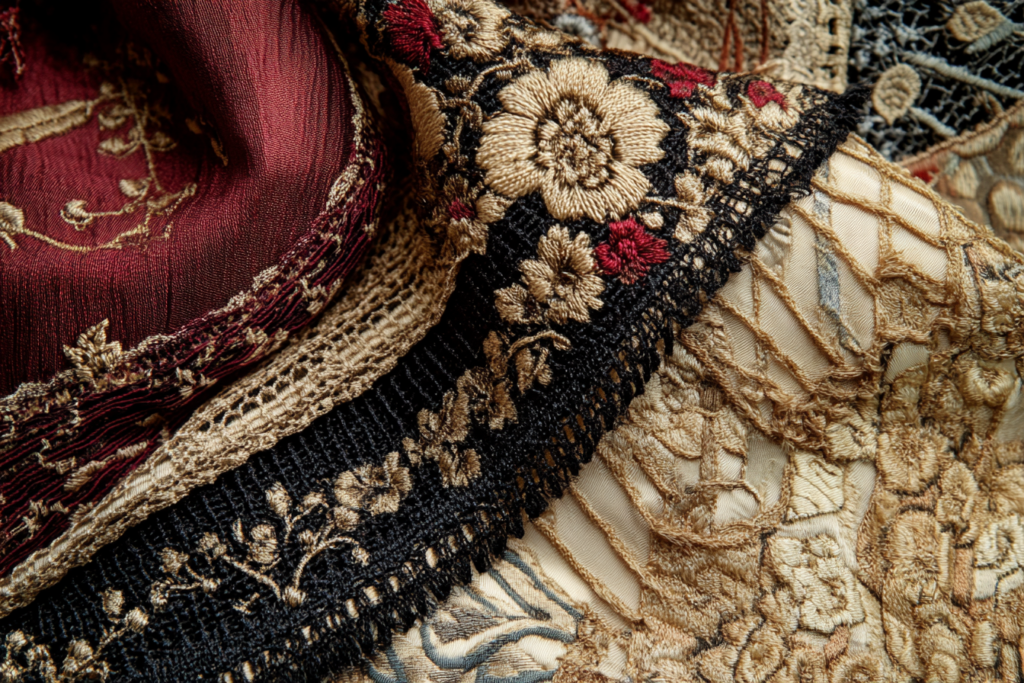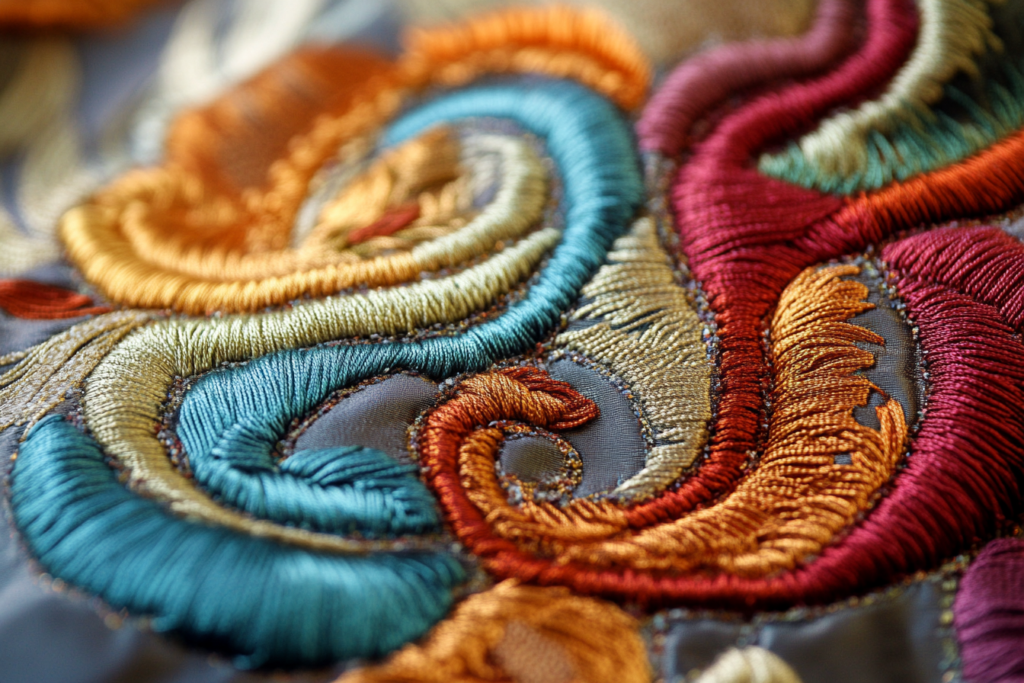Ornamentation: Enhancing Fabric & Design with Decorative Elements
Meta Description: Ornamentation refers to any fiber, thread, or trim that enhances fabric design with patterns and textures. Learn how it’s used in fashion and textiles.
What is Ornamentation in Textiles & Fashion?
Ornamentation refers to any decorative fiber, thread, or trim that adds a distinct design or pattern to fabric. It is used to enhance visual appeal, create texture, and define garment aesthetics, making it a key element in fashion design, embroidery, and textile decoration.
Ornamentation can be woven into fabric, embroidered, applied as surface embellishment, or integrated through trims and decorative stitching.


Key Features of Ornamentation in Fashion & Textiles
✔ Enhances Fabric Design & Aesthetics – Adds visual interest and artistic expression.
✔ Can Be Thread, Fiber, or Trim – Includes lace, embroidery, beading, and appliqué.
✔ Used for Patterned or Textured Effects – Found in woven, embroidered, and embellished textiles.
✔ Common in Fashion, Home Décor & Couture – Used in runway fashion, formalwear, and upholstery.
✔ Available in Various Techniques – Includes hand-sewn, machine-made, or digitally designed ornamentation.
Types of Ornamentation in Fashion & Textiles
1. Embroidery & Decorative Stitching
- Uses thread or fiber to create artistic patterns.
- Found in traditional clothing, haute couture, and home textiles.
2. Lace & Trims
- Includes lacework, piping, ribbons, and decorative edging.
- Adds a delicate, intricate aesthetic to garments.
3. Beading & Sequins
- Small embellishments sewn onto fabric for texture and sparkle.
- Common in evening gowns, dancewear, and luxury fashion.
4. Appliqué & Patchwork
- Decorative fabric pieces applied onto a base fabric.
- Used in quilting, couture fashion, and decorative textiles.
5. Woven or Jacquard Patterns
- Designs incorporated directly into the fabric weave.
- Seen in brocades, damasks, and specialty woven textiles.
Where is Ornamentation Used in Fashion?
📌 High-Fashion & Couture Designs – Embellished gowns, luxury suits, and runway pieces.
📌 Traditional & Cultural Textiles – Ornate details in ethnic garments and historical costumes.
📌 Home Textiles & Interior Design – Found in curtains, bedding, and upholstery.
📌 Handmade & Artisanal Clothing – Includes hand-stitched embroidery and decorative knitting.
📌 Casualwear & Accessories – Used in embellished jeans, decorative scarves, and handbags.
Ornamentation vs. Fabric Structure
| Feature | Ornamentation | Fabric Structure |
|---|---|---|
| Purpose | Enhances design & decoration | Forms the foundation of the textile |
| Applied or Integrated? | Applied onto fabric | Woven or knitted into fabric |
| Common Techniques | Embroidery, trims, beading, appliqué | Weaving, knitting, bonding |
| Best For | Couture, decorative fashion, luxury wear | Everyday clothing, functional textiles |
💡 Tip: Ornamentation is an add-on design element, while fabric structure defines how the material is built.
Advantages of Using Ornamentation in Fashion Design
✔ Adds Artistic & Visual Appeal – Transforms basic fabric into statement pieces.
✔ Enhances Brand Identity & Craftsmanship – Used in couture and bespoke designs.
✔ Provides Texture & Depth – Creates dimensional and tactile effects.
✔ Increases Fabric Versatility – Can be subtle (lace) or bold (sequins & beading).
✔ Adapts to Various Styles – Works in minimalist, vintage, and high-fashion aesthetics.
Conclusion: The Importance of Ornamentation in Fashion & Textiles
Ornamentation is an essential design element in fashion, bringing creativity, texture, and individuality to garments. Whether through embroidery, trims, appliqué, or beading, it enhances fabric aesthetics and transforms clothing into artistic expressions.
For designers and manufacturers, ornamentation plays a key role in defining the uniqueness and luxury of a textile piece, making it a fundamental part of fashion craftsmanship and innovation.



